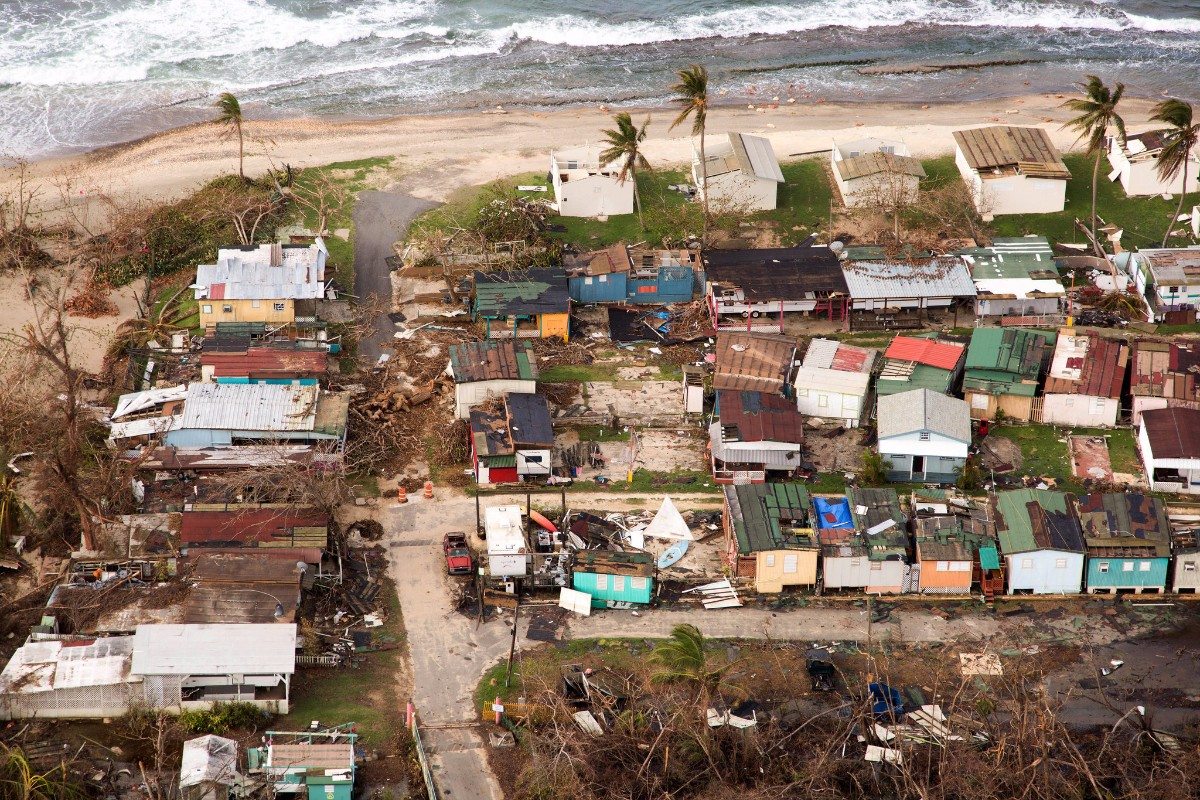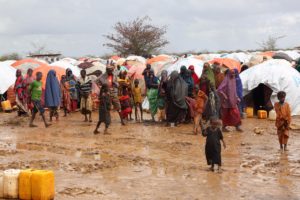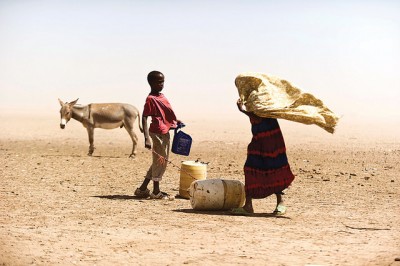 An aerial view of the damage left behind by Hurricane Maria in Puerto Rico
An aerial view of the damage left behind by Hurricane Maria in Puerto Rico
Finding a Place for Climate Refugees
With the recent natural disasters throughout the United States there has been renewed discussion on the idea of “climate refugees.” Some argue that Hurricane Maria and the resulting devastation in Puerto Rico could be the catalyst for a mass migration of thousands of people from the island to the mainland United States. However, this characterization is problematic in part because of the use of the term “refugee.” Following the Second World War, the United Nations defined a refugee as: “someone who has been forced to flee [their] country because of persecution, war, or violence. A refugee has a well-founded fear of persecution for reasons of race, religion, nationality, [or] political opinion…” The term “refugee” also comes with a very specific set of legal consequences that compels the international community to protect people who fall into that category.
 Unfortunately, displacement related to climate change is already happening – the United Nations Refugee Agency estimates that an annual average of 21.5 million people have been forcibly displaced by “weather-related sudden on-set hazards,” which studies show have become more common and intense due to climate change. These events include floods, storms, and wildfires. The International Organization of Migration (IOM) stresses that though sudden on-set events are more likely to result in displacement, an overall larger number of people are expected to migrate due to “gradual deterioration of environmental conditions,” including desertification, decreased soil fertility, coastal erosion, and sea-level rise. Such long-term changes are associated with climate change, and can seriously impact entire communities’ ability to survive.
Unfortunately, displacement related to climate change is already happening – the United Nations Refugee Agency estimates that an annual average of 21.5 million people have been forcibly displaced by “weather-related sudden on-set hazards,” which studies show have become more common and intense due to climate change. These events include floods, storms, and wildfires. The International Organization of Migration (IOM) stresses that though sudden on-set events are more likely to result in displacement, an overall larger number of people are expected to migrate due to “gradual deterioration of environmental conditions,” including desertification, decreased soil fertility, coastal erosion, and sea-level rise. Such long-term changes are associated with climate change, and can seriously impact entire communities’ ability to survive.
Because the impacts of climate change are so widespread, climate change has been labeled a “threat multiplier,” meaning that it exacerbates existing stressors within communities, such as poverty, political instability, and social tensions. Coupled with increasing urbanization and the potential for sudden migration, climate change is a clear threat to both national and international security. Under such conditions, conflict becomes more likely. Given the destabilizing effect of climate change, coming to a consensus on what constitutes a climate refugee and what protections they are guaranteed is an essential next step in ensuring the security of vulnerable groups around the world.
The IOM has suggested that environmental migration be defined as: “…a multiclausal phenomenon, yet one in which environmental drivers play a significant and increasingly determinative role.” There are several important components to this kind of displacement, including if the distance migrated is local or international, whether the migration is temporary or permanent, and whether people migrated voluntarily or because they were forced to. After natural disasters, classifying environmental migration as forced is uncontroversial, but with slower on-set environmental issues, the distinction may not be as clear. While the environment may be a main driver of migration, it is difficult to separate environmental drivers from the economic, social, political, and demographic aspects that also impact an individual’s desire and decision to migrate.
The complex nature of the issue has contributed to the varying definitions and multiple terms used for forced displacement due to climate change. While it’s clear that policies that guarantee regular paths of migration, legal protection, and economic integration are needed, there is still a lack of consensus on how exactly this framework should be created and implemented.
The Nansen Initiative is a state-led bottom-up consultative process that seeks to identify effective practices and build consensus around protections for people displaced across borders due to disasters. In October 2015, over 100 nations approved a non-legally binding document called the “Agenda for the Protection of Cross-Border Displaced Persons in the Context of Disasters and Climate Change.” The agenda does not call for a new international convention on climate related displacement, akin to the 1951 Refugee Commission, but works to integrate effective practices and policies by both states and non-state actors like NGOs. The document focuses on exploring measures that could be voluntarily adopted by states to admit migrants on humanitarian grounds, and in “international solidarity” with disaster affected countries.
While the Nansen Initiative is a good start, it may fall short to adequately protect those who are forced to flee, whether they are called environmental migrants or climate refugees. One thing is clear however – people are already being forced to migrate due to the changing climate. An estimated 200,000 Bangladeshis become homeless each year due to river erosion and one in 10 citizens of small island states like Kiribati and Tuvalu have left their homes within the past decade. Until a new international binding convention is negotiated, which could take years, there must be short-term legal protection and social policies put in place for all those who are forced to migrate across political borders. The impacts of climate change are only projected to get worse, and the millions of people who are forced to migrate from their homes deserve legal protection.





